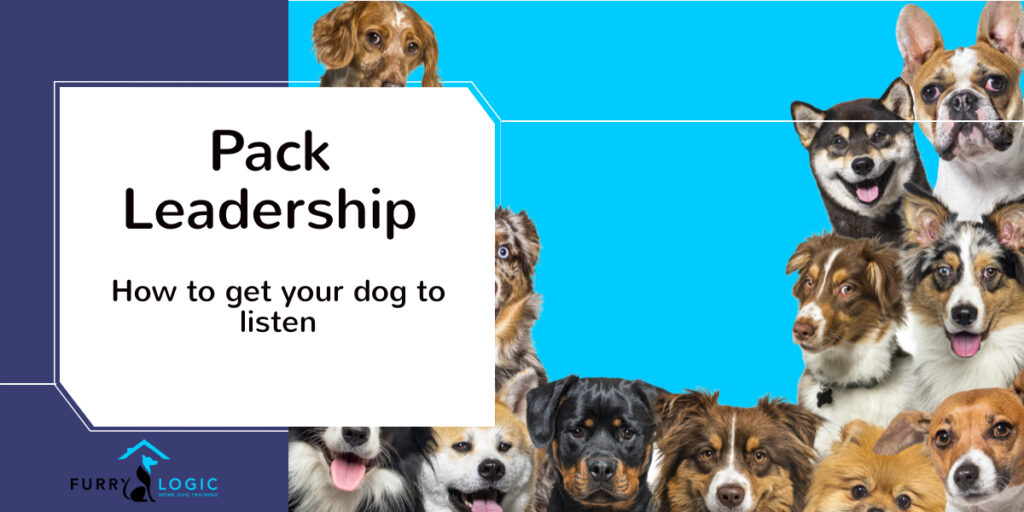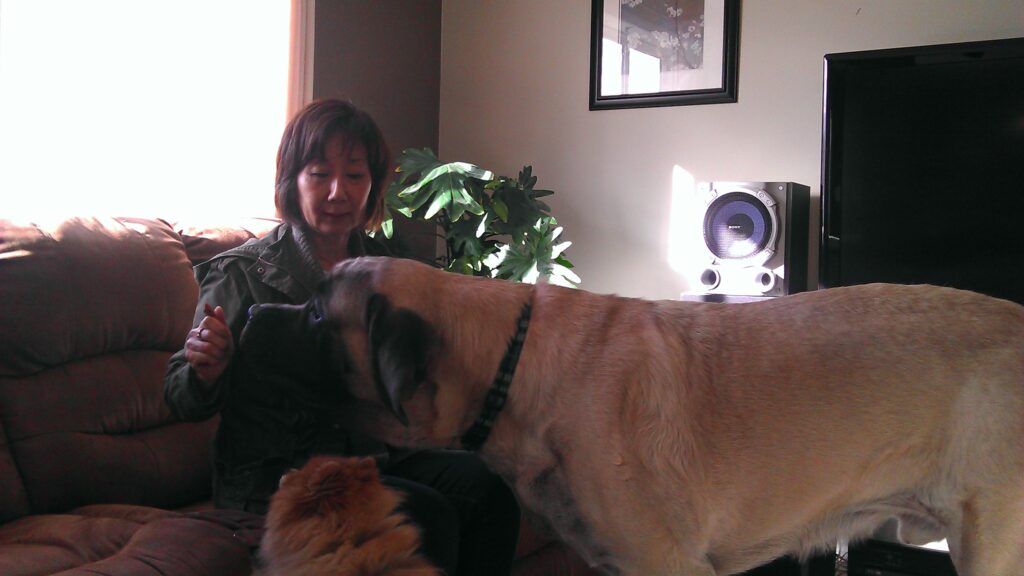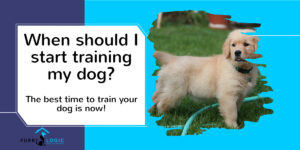In the grand scheme of things, it all comes down to “Who is in charge?”
-Furry Logic Dog Training

How can I get my dog to listen to me?
One of the biggest concerns that most dog owners have is that their dogs won’t do what they want them to do. Whether the problem is house training, jumping on us, chewing on inappropriate things, excessive barking. The list goes on and on.
In the grand scheme of things, it all comes down to “Who is in charge?” We understand that for some people, they don’t want to be in charge. They just want to be friends with their dogs. One of our clients was the CFO of a pharmaceutical company. All he wanted to do after being a boss all day at work was to come home and let his dog go wild. Luckily his wife hired us and was willing to cover for him and do the dog training. When little Charlee, the miniature Schnauzer, learned to stop jumping all over people with his dirty paws and stopped tearing at “Papa’s” pant leg when he came through the door, he also learned that his calmness led to more affection.
Dogs are highly social animals
Dogs have been our companions for over 15,000 to 20,000 years. BBC wrote an article about the study of dog DNA dating back to the last Ice Age. They are highly social animals and have a natural desire to live with us. But they also have instincts rooted in their genetic descent from the gray wolf. Most of their wildness has been bred out but they would not be dogs if they didn’t still have their superior sense of hearing, eyesight and sense of smell. They also maintain their sharp teeth and fast reflexes.
It’s when our dogs use these tools counter to what is socially acceptable by human rules then we understand how important it is for our dogs to listen to us. Hopefully, we know better than our dog as we know better than a child, what is acceptable and what is not acceptable behaviour.
To get a dog to listen we need to start from a position of leadership.
If this word is too strong, perhaps we can label it as parenting. When we first bring a puppy into our home, we like to describe it as you replacing the mother dog who teaches what the rules of behaviour are. Your job is to continue that training and then some.
Dogs among dogs have certain rules. If you leave them to their own devices, sometimes someone gets hurt. We are called in many times to help people whose dogs are fighting with each other to the extent that someone ends up at the vet. It becomes expensive when owners believe that the dogs need to “sort it out between themselves”. This is where a leader needs to step in.
All social groups work best together when there is a leader. Bees have a Queen bee. Bison have a dominant female. So do elephants. Wolf packs have a dominant couple as leaders. Even a hockey team has a captain.
Without leadership there is anarchy, and the social group disintegrates. There is in-fighting and the young cannot be cared for properly. For the existence of the group into the future there needs to be a leader. For humans, one basic grouping is the nuclear family. The parent or parents must make the decisions that best benefit the group. They set out rules and boundaries of behaviour so that life functions in an effective way and everyone knows their responsibilities. Similarly, in a human/dog relationship everyone needs to be clear on their position in the pecking order (another animal analogy). This is where our training comes in.
Behaviour issues caused by lack of leadership
- Sibling rivalry
- Territoriality
- Excessive barking
- Pulling on leash
- Jumping on or barking at owner
- Over guarding
- Separation anxiety
- Aggression
Let’s jump to a behaviour issue that is symptomatic of lack of leadership in the home:
Sibling Rivalry
Conflict between two dogs who live together in the same household is called sibling rivalry.
In cohesive packs, the dominant dog will step in and break up skirmishes using its quick reflexes, a growl and its body language and sharp teeth to stop the fight. Teeth and claws are used in a highly controlled manner to show dominance but not to cause injury. When subordinate dogs understand that the leadership job is taken, there is no more fighting.
You will know when and how to stop conflict
Our training will give you the skills to prevent these episodes from happening in a human and humane fashion to let your dogs know that this behaviour cannot be tolerated. What we mean by “human” is that we cannot compete with a dog at their level. The average dog owner does not have the reflexes to physically dominate a dog the way that some popular dog trainers demonstrate, think Dog Daddy or the young Caesar Millan. It would be a quick trip to emergency for the majority of people.
We do not support any form of physical activity that requires forceful contact such as the “Alpha Roll” or grabbing by the scruff of the neck. Hands should always be used for affection only. No training should involve pain such as electric shock, prongs or painfully high frequency sounds. The goal of any dog training is to build trust, never fear.
When it is established that you are the parent of the human/dog family then the fighting stops and peace reigns in the kingdom. You will recognize when trouble is brewing, and you will know when and how to intervene safely and effectively to prevent conflict. We will also show you how you are sabotaging yourself and giving away the respect you deserve. If you ever watched the TV show back in the mid-2000s, you’ll understand why people called us “Super Nanny.”
A case study where learning pack leadership skills made all the difference
One of our case studies is of a women who had an English Mastiff. Buck was not fully grown but already weighed 230lbs. Our client had just broken up with her boyfriend who told her she would never be able to get her dog to listen to her. Determined to prove him wrong, she hired us. We were able to show her how she was giving her power to her dog . What became clear to us was that he wouldn’t listen because she was afraid to impose any rules upon him.
We could tell from the outset that Buck was a gentle soul but through misunderstanding her actions or, shall we say, inactions, our client communicated that she was weak and needed to be cared for. One small change she needed involved mealtime. Buck thought that food miraculously was always available in his food dish. Because our client was free feeding him, Buck could graze whenever the feeling hit him. He didn’t appreciate that our client was the provider; much like the teenager who ravages the refrigerator with no consideration for how much things cost or that there are other people in the house who he must share with.

Under the new regime, food was put out twice a day, once in the morning and once in the evening with careful attention, of course, to quantity instructions provided on the packaging. Buck was given 15 minutes to eat and if he didn’t finish everything in one sitting the rest was picked up, put away and added to his next meal.
This small change was an important step in Buck’s education. He soon started to see that our client controlled his access to food, an important component to a dog’s survival. Along with several training exercises and other daily practices that we recommended, our client quickly saw an improvement in her relationship with Buck. Less than a week later, the ex-boyfriend could not believe how responsive Buck was to her and her alone. Our client said that our training changed her life for the better in more ways than one.
If you are having difficulty with your dog not listening to you, book a lesson now with us and we’ll put you on the right path to a happy life with your dog. Book your lesson package today.







No comment yet, add your voice below!